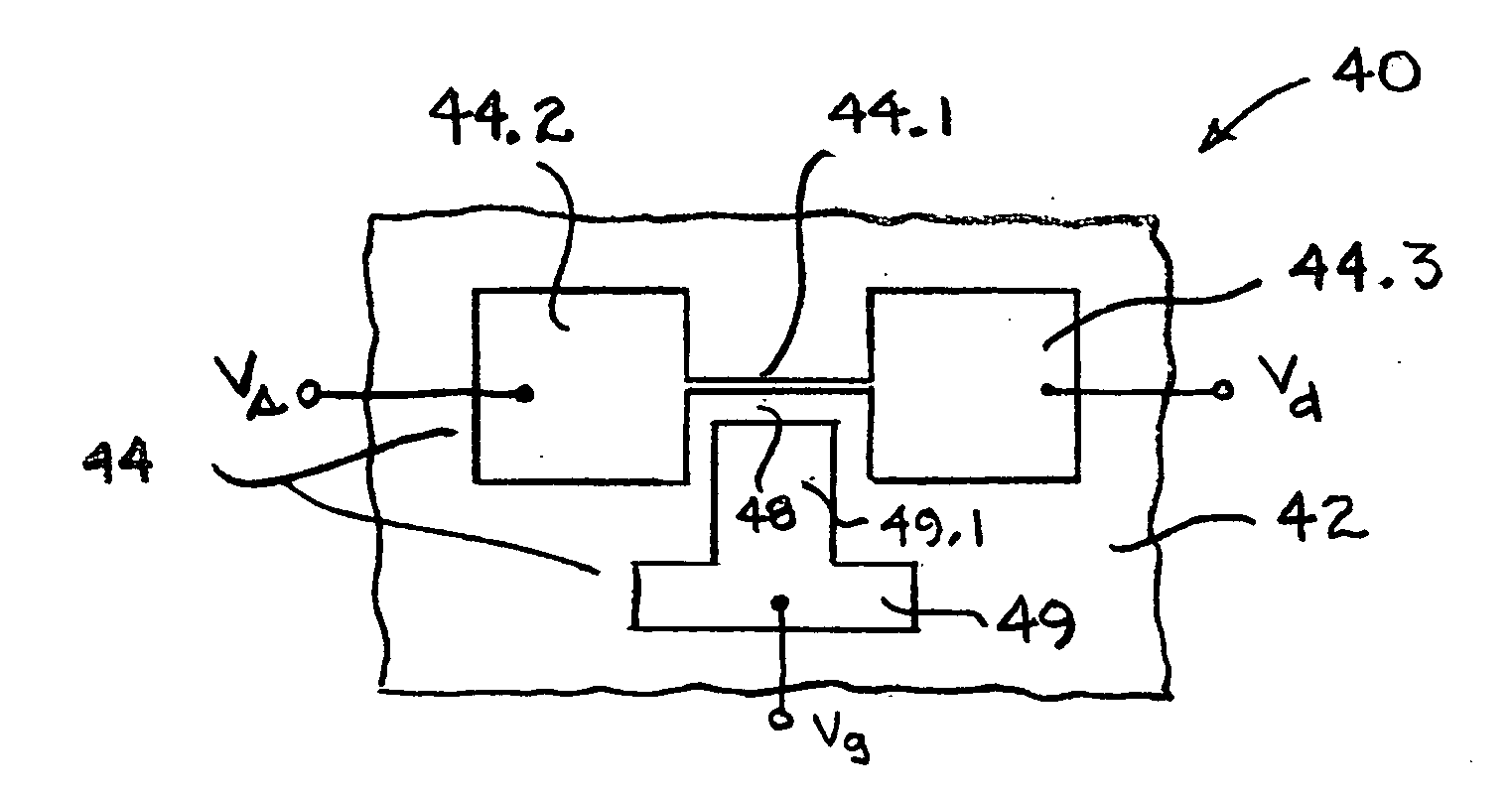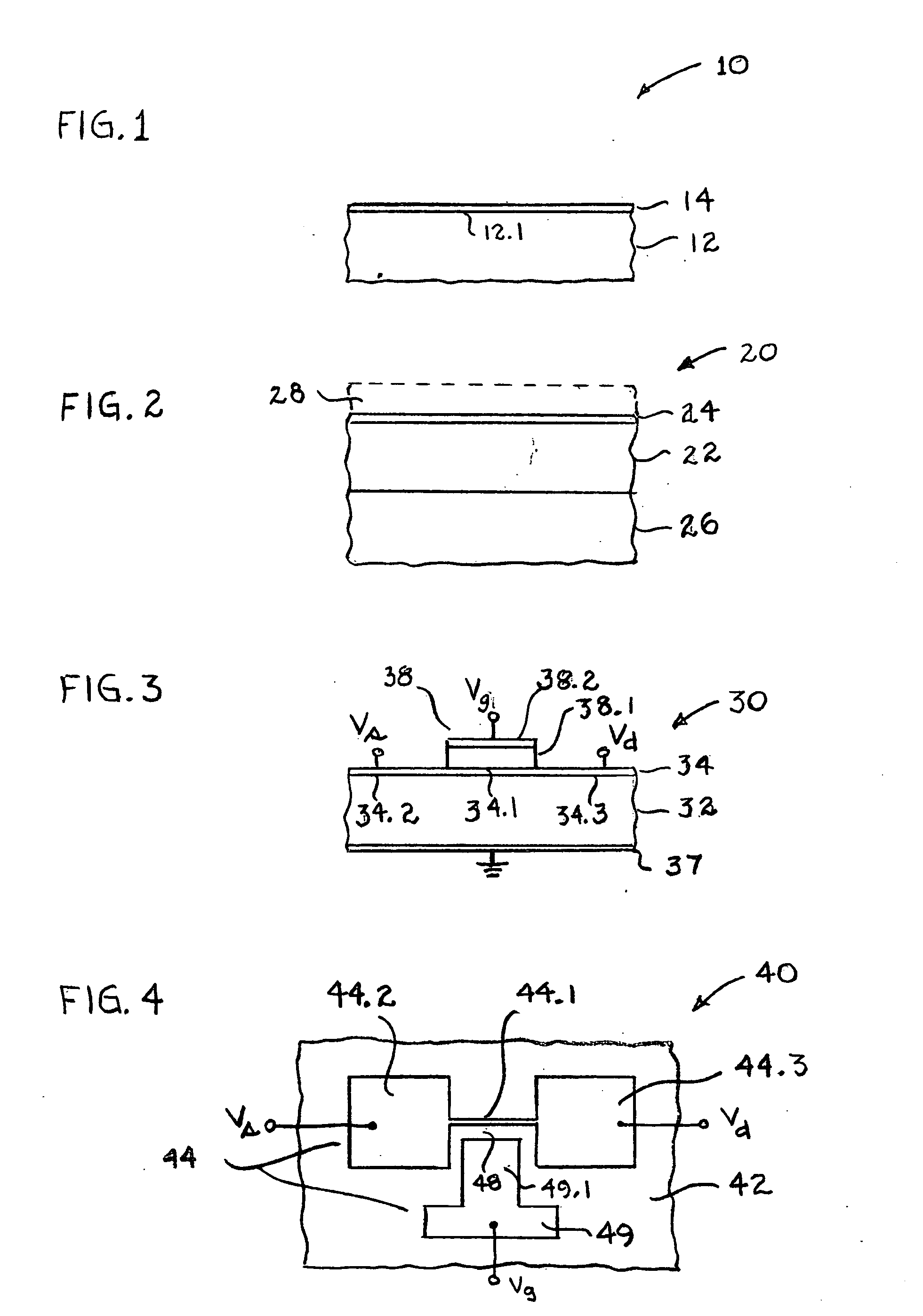Devices including graphene layers epitaxially grown on single crystal substrates
a technology of graphene and substrate, applied in the field of electromechanical devices, can solve the problems of graphite having a relatively large lattice-mismatch of about 20%, growing single sheets of graphene, and the most vulnerable monolayer of carbon to damag
- Summary
- Abstract
- Description
- Claims
- Application Information
AI Technical Summary
Benefits of technology
Problems solved by technology
Method used
Image
Examples
Embodiment Construction
[0021] With reference now to FIG. 1, an electronic device 10 comprises a body 12 having a single crystal region 12.1 on a major surface of the body 12. The region 12.1 has a hexagonal crystal lattice that is substantially lattice-matched to graphene, and at least one layer 14 of graphene epitaxially disposed on region 12.1. Preferably, only a single layer of graphene is formed on region 12.1. A single graphene layer avoids complications associated with defects between multiple layers. However, my invention contemplates having more than one layer of graphene disposed on the substrate. Whether multiple graphene layers are practical depends to a large extent on the intended device application. For example, in devices (e.g., FETs discussed infra) in which multiple graphene layers might have to be depleted (e.g., when a portion of the graphene layers form an FET channel), the semi-metal nature of graphene may make it difficult to achieve sufficient depletion in more than, say, two or thr...
PUM
| Property | Measurement | Unit |
|---|---|---|
| angle | aaaaa | aaaaa |
| angle | aaaaa | aaaaa |
| crystal lattice | aaaaa | aaaaa |
Abstract
Description
Claims
Application Information
 Login to View More
Login to View More - R&D
- Intellectual Property
- Life Sciences
- Materials
- Tech Scout
- Unparalleled Data Quality
- Higher Quality Content
- 60% Fewer Hallucinations
Browse by: Latest US Patents, China's latest patents, Technical Efficacy Thesaurus, Application Domain, Technology Topic, Popular Technical Reports.
© 2025 PatSnap. All rights reserved.Legal|Privacy policy|Modern Slavery Act Transparency Statement|Sitemap|About US| Contact US: help@patsnap.com



